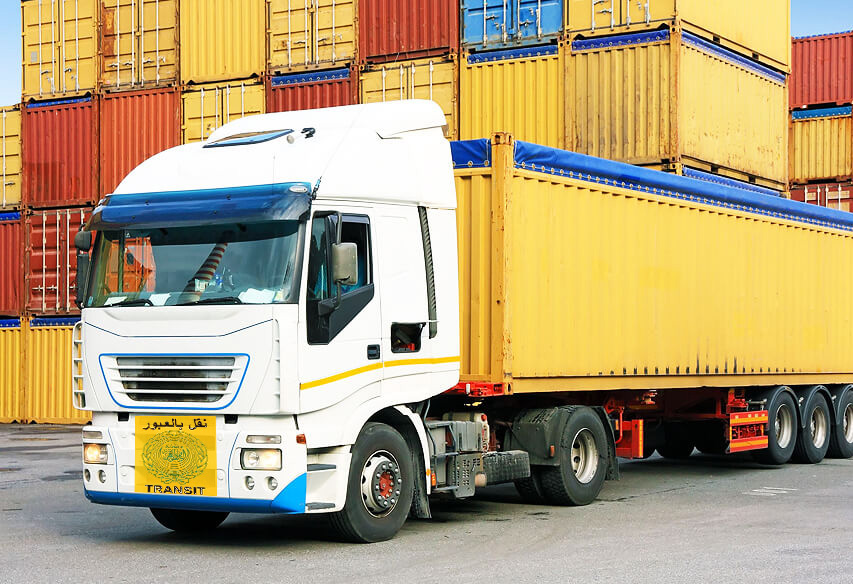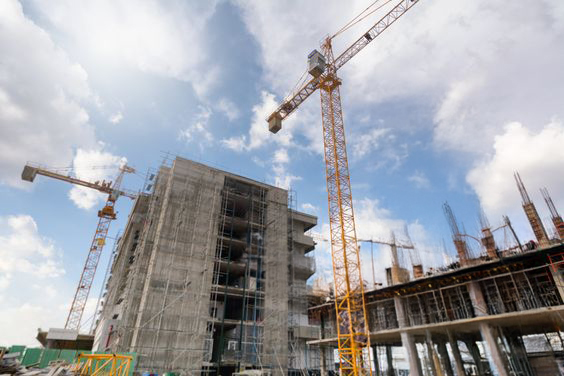Since its establishment, the economic file has remained one of the most prominent and enduring pillars of the League of Arab States. Economic cooperation among Arab countries constituted the earliest domain of joint action, particularly in the sectors of transportation and communications. This focus stemmed from a strategic conviction that facilitating connectivity and communication was the essential pathway to achieving comprehensive Arab integration.
Indeed, the first treaty concluded under the auspices of the League of Arab States—just a year after its founding in 1946—was the Civil Aviation Treaty, highlighting the centrality of connectivity. In the same year, the first institutional union within the League's framework was created: the Arab Postal Union, which designated member states as a unified postal region for the exchange of mail and postal services.
Over the decades, mechanisms for joint Arab economic action have expanded significantly. A number of Arab financial institutions have been established to strengthen intra-Arab economic ties and support development efforts. These include the Arab Bank for Economic Development in Africa, the Arab Fund for Economic and Social Development, the Arab Monetary Fund, the Arab Investment and Export Credit Guarantee Corporation, and the Arab Authority for Agricultural Investment and Development.
To further institutionalise coordination in specialised economic sectors, several ministerial councils were formed—among them the Council of Arab Ministers of Telecommunications and the Council of Arab Ministers of Electricity and Energy. In parallel, specialised joint Arab organisations were created, such as the Arab Organisation for Industrial Development, the Arab Organisation for Agricultural Development, and the Arab Labour Organisation. These entities have played a vital role in harmonising technical policies and coordinating economic priorities among Arab states.
Below are selected highlights of the League of Arab States' achievements in the economic realm—though the scope of its contributions extends far beyond:
1. The Greater Arab Free Trade Area
Recognising the strategic importance of economic integration, the Charter of the League of Arab States explicitly called for coordination and cooperation among member states in the economic domain, including trade relations. Building on this foundation, numerous agreements were signed and decisions adopted over the years to advance the goal of Arab economic unity.
In 1998, a landmark step was taken with the establishment of the Greater Arab Free Trade Area (GAFTA). This initiative sought to enhance intra-Arab trade and facilitate the free movement of goods, services, capital, and production inputs by offering preferential treatment among Arab economies. The GAFTA agreement represented a critical milestone in the march towards Arab economic integration, paving the way for deeper cooperation and the launch of numerous joint Arab development projects.
Among the most significant achievements of the League of Arab States in the economic domain are the substantive steps taken towards the liberalisation of trade in goods and services among Arab countries, and the structured progression towards economic integration in line with internationally recognised practices. Member states have concluded a series of pivotal agreements aimed at facilitating trade, many of which have been translated into tangible measures. The most notable of these include:
• September 1953: The Council of the League of Arab States approved the Agreement to Facilitate Trade and Regulate Transit Trade among Member States, marking one of the earliest efforts to promote intra-Arab commercial exchange.
• 1957: The establishment of the Council of Arab Economic Unity, with the objective of promoting closer economic ties and laying the foundation for gradual economic integration among member states.
• 1981: The Agreement for the Development and Facilitation of Trade among Arab Countries was adopted. Considered one of the most consequential trade agreements within the League's framework, it laid the legal and institutional groundwork for the phased removal of tariffs and non-tariff barriers on Arab trade.
• 1997–2005: The launch and successful implementation of the GAFTA, which granted exemptions for goods of Arab origin from customs duties and other charges with equivalent effect. The agreement envisioned a ten-year timeline for the complete elimination of such duties by 2007. However, this objective was accelerated, with full tariff liberalisation achieved by early 2005. In parallel, a dispute settlement mechanism was adopted in 2004 to ensure the fair resolution of commercial disputes—a mechanism currently under review to align with global best practices.
• Customs Cooperation: Multiple agreements have been concluded to enhance cooperation in the customs sector. These include the Agreement on the Regulation of Transit Transport among Arab Countries and the Arab Customs Cooperation Agreement, which entered into force in 2023. Both aim to streamline and harmonise customs procedures, enhance the exchange of information among Arab customs authorities, and facilitate the flow of goods across borders.
• 2019: The Agreement on the Liberalisation of Trade in Services among Arab Countries entered into force in October 2019, marking a strategic shift towards the inclusion of service sectors—such as finance, transport, health, education, and tourism—within the scope of regional economic liberalisation.
• The Arab Customs Union: Representing the next major phase of Arab economic integration, the Arab Customs Union is currently under active negotiation. Key components have already been finalised, including the Unified Arab Customs Law, the Unified Arab Customs Procedures Manual, and other institutional frameworks. Negotiations are presently focused on formulating a unified Arab customs tariff—an essential step towards the full realisation of a common Arab economic space.

2. In the Field of Communications and Information Technology:
The League of Arab States has long recognised the strategic significance of communications and information technology as a driver of development and regional integration. In this context:
• The Council of Arab Ministers of Communications and Information was established in 1989, followed by the creation of the Permanent Arab Postal Committee in 1995, with the objective of developing the postal sector in the Arab region and enhancing cooperation, coordination, and the exchange of expertise among member states.
• In 2012, the Arab Internet Governance Forum was launched in collaboration with the United Nations Economic and Social Commission for Western Asia (ESCWA), providing a vital regional platform for dialogue on internet governance policies and digital transformation.
• The Arab Cybersecurity Council was established in 2023 as a regional mechanism to coordinate efforts to protect Arab cyberspace and enhance collective capabilities in confronting emerging cyber threats.
• That same year, the Arab Telecommunications and Information Strategy—also referred to as the Arab Digital Agenda—was adopted both at the level of the Council of Arab Ministers of Communications and Information and at the Arab Summit, setting a comprehensive roadmap for digital transformation across the region.
• In 2024, the Arab Cybersecurity Strategy was endorsed, outlining principles and action plans to enhance resilience and cooperation in cybersecurity among Arab countries.
• In 2025, the Arab Artificial Intelligence Strategy was adopted, marking a significant step towards leveraging AI technologies for sustainable development, innovation, and economic diversification in the Arab world.
One of the notable milestones in this sector is the recognition of the League of Arab States as the official representative of the Arab Regional Group within the International Telecommunication Union (ITU). Additionally, the League successfully registered the top-level domain names ".Arab".

3. In the Field of Transport:
Given the central role of transport in facilitating economic integration, trade, and people-to-people connectivity, the League of Arab States has given sustained attention to this sector. It has adopted a comprehensive framework of agreements covering all modes of transport:
A. Land Transport:
• Agreement on the Unified Arab Transit Carnet
• Agreement on the Regulation of Road Passenger Transport between Arab Countries
• Agreement on the Regulation of Road Freight Transport between Arab Countries
• Agreement on the Regulation of Rail Freight Transport between Arab Countries
B. Maritime Transport:
• Agreement on the Establishment of the Arab Ship Classification Organisation
• Agreement on Maritime Passenger and Freight Transport between Arab Countries
C. Air Transport:
• Agreement on the Establishment of the Arab Civil Aviation Authority
• Agreement on the Liberalisation of Air Transport between Arab Countries
• Agreement on Arab Collective Negotiation with Regional and Sub-Regional Blocs in the Field of Air Transport
• Unified Guiding Agreement on Air Transport for Bilateral Negotiations between Arab Countries and the European Union
• Agreement on Mutual Exemption from Taxes and Fees on the Activities and Equipment of Arab Air Transport Companies
D. Multimodal Transport:
• Agreement on the Multimodal Transport of Goods between Arab Countries
• Adoption of a unified curriculum for training and certifying personnel involved in the transport of dangerous goods, based on materials developed by the International Road Transport Union, to serve as a regional framework for harmonising procedures in this specialised field.
• The Agreement on Maritime Passenger and Goods Transport Procedures has been finalised and approved by the Council of Arab Transport Ministers at its 37th ordinary session, in preparation for its submission to the Economic and Social Council for formal adoption.
• The Council also approved a comprehensive feasibility study to establish an Arab mechanism and integrated database in support of the ship repair and construction industry. This initiative aims to strengthen industrial capabilities in this critical sector. The study has been circulated to member states to consider potential implementation of the proposed mechanism based on its findings.

4. In the Field of Environment, Meteorology, and Climate Change:
In recognition of the growing environmental challenges and the critical implications of climate change, the League of Arab States has taken proactive steps to coordinate Arab efforts and represent the region in global environmental forums. Among the most notable achievements:
• The Arab Ministerial Declaration on Climate Change was adopted in 2007, marking a regional commitment to addressing climate-related challenges. Subsequently, the Arab Negotiating Group on Climate Change was formed to represent Arab interests in international negotiations.
• The Green Belts Project for Arab Regions was launched to combat desertification and enhance the resilience of ecosystems in vulnerable areas.
• In 2016, the Council of Arab Ministers of Meteorology and Climate was established to enhance regional coordination and cooperation in weather forecasting, early warning systems, and climate policy.
• The Arab Environment Forum was launched in 2022 as a platform for dialogue, knowledge-sharing, and policy coordination among Arab countries and international partners.
• The First Report on the State of Climate in Arab Countries was prepared in cooperation with the World Meteorological Organisation and the United Nations Economic and Social Commission for Western Asia (ESCWA), providing comprehensive data and analysis to guide policy decisions.
• In parallel, Arab negotiating teams were formed to follow up on international environmental agreements, including the Intergovernmental Negotiating Committee on Ending Plastic Pollution and global frameworks related to the protection of the ozone layer, representing Arab consensus in multilateral negotiations.

5. In the Field of Water Resources:
Water security remains a strategic concern for Arab countries, prompting the establishment of the Arab Ministerial Water Council in 2008 under the umbrella of the League of Arab States. The Council has made significant strides towards sustainable water governance:
• It has developed a comprehensive Arab strategy and executive action plan to address regional water challenges, ensure water security, and promote the integrated management of water resources.
• In 2011, a Memorandum of Understanding was signed between the Arab Ministerial Water Council and the World Water Council, under which the Arab world is recognised as a single geographical group, enhancing its influence in global water policy discussions.

6. In the Field of Disaster Risk Reduction:
In line with its commitment to protecting the region from natural disasters and enhancing emergency response capacities, the League of Arab States has undertaken several important initiatives:
• In 2009, the Council of the League approved the Amended Agreement on Arab Cooperation in the Field of Organising and Facilitating Relief Operations, aimed at improving regional disaster response.
• The Arab-African Fund for Disaster Risk Reduction was established following its approval at the 2010 Joint Arab-African Summit, reflecting cross-regional solidarity in risk mitigation efforts.
• The Arab Centre for the Prevention of Earthquake and Other Natural Disasters, headquartered in Algeria, entered into force in 2010, providing technical support and research to enhance preparedness.
• The 2012 Baghdad Arab Summit adopted the Arab Strategy for Water Security, addressing future sustainability challenges. The same summit also approved the Arab Strategy for Disaster Risk Reduction 2020.
• Following the global adoption of the Sendai Framework for Disaster Risk Reduction 2015–2030, and with full participation by Arab countries at the Third UN World Conference in Sendai, Japan, the Council of Arab Ministers Responsible for the Environment updated the Arab strategy and implementation mechanisms to align with the new international framework.
• The 2018 Dhahran Summit adopted the updated Arab Strategy for Disaster Risk Reduction and the revised Arab Coordination Mechanism, with the Nouakchott Summit in 2016 approving its implementation plan.
o Several projects under this plan have already been implemented, including: the Regional Initiative to Assess the Impact of Climate Change on Water Resources and the Vulnerability of Social and Economic Sectors in the Arab Region, in collaboration with ESCWA; and the Climate Change Adaptation Project in the Water Sector, in partnership with the German Agency for International Cooperation (GIZ).
• As early as 2005, the Arab Summit approved the establishment of a Coordination Mechanism between Arab Agencies Concerned with Natural Disasters and Emergencies. This mechanism has since evolved, and in 2018 its mandate was expanded and its name updated to the Arab Coordination Mechanism for Disaster Risk Reduction, reflecting a broader and more integrated approach across all sectors.
• In 2019, the first joint meetings of Arab Ministers of Water and Agriculture were held in partnership with the Arab Organisation for Agricultural Development and the Food and Agriculture Organisation (FAO). The goal was to address the food-water nexus in light of climate change, and to formulate a regional action plan aimed at enhancing food security and climate resilience across the Arab region.

7. In the Field of Housing:
Recognising the vital role of housing and urban development in achieving social stability and economic growth, the Council of Arab Ministers of Housing and Construction was established under the framework of the League of Arab States, holding its first session in 1982.
In December 2015, the Council adopted the Arab Strategy for Housing and Sustainable Urban Development 2030, which outlines a vision for integrated, inclusive, and environmentally sustainable urban development in the Arab region. The strategy was officially endorsed at the 2016 Arab Summit held in the Islamic Republic of Mauritania, reaffirming high-level political commitment to achieving sustainable cities and communities in line with global development goals.

8. In the Field of Electricity and Energy:
The Arab Ministerial Council for Electricity was established in 1993 to foster cooperation and coordinate efforts among Arab states in the generation, transmission, and distribution of electricity. The Council's objectives include:
• Preparing studies on the interconnection of electricity grids among Arab countries.
• Promoting joint infrastructure projects, particularly in grid interconnection.
• Establishing a comprehensive Arab electricity database to facilitate data exchange and support decision-making at regional and international levels.
• Encouraging scientific research in the field of electric power.
Among the Council's most notable achievements are the General Agreement and the Market Agreement forming the foundation for the Arab Common Electricity Market, which aims to create a unified regional electricity market.
In the area of energy research, the Council has issued several key frameworks and strategic documents, including:
• The Arab Renewable Energy Strategy (2010–2030).
• The Arab Guiding Framework for Improving Electricity Efficiency and Rationalising Consumption by end users.
• The Renewable Energy and Energy Efficiency Guide in Arab Countries.
• The strategic report entitled "Towards an Arab Green Hydrogen Strategy", which assesses opportunities for developing green hydrogen as a clean and sustainable energy source across the Arab region

9. In the Field of Statistics and Databases:
In acknowledgment of the essential role that reliable data plays in formulating sound economic and social development policies, the League of Arab States has prioritised statistical publishing and database development across all sectors. Key achievements include:
• The establishment of a foreign trade database for Arab countries, based on the Harmonised System (6-digit level), enabling time series analysis of detailed trade data.
• A comprehensive tourism database across Arab states.
• Extensive databases covering population and labour force, health, education, agriculture, transport, communication, energy, industry, and national accounts, among other economic and social indicators.
• In support of the 2030 Agenda for Sustainable Development, the General Secretariat of the League of Arab States has developed a unified Arab framework for sustainable development indicators, encompassing the three dimensions of sustainable development: economic, social, and environmental. This framework was approved by the Permanent Technical Committee for Statistics as the baseline set of indicators to be produced by all Arab countries. The Committee is currently working to align the framework with the Sustainable Development Goals (SDGs) and enhance its relevance to national and regional development priorities.
• The League maintains robust cooperation with Arab national statistical offices, as well as regional and international partners, particularly ESCWA, to improve the availability and quality of statistical data. Efforts include organising joint training sessions, technical workshops, and capacity-building programs aimed at enhancing the competencies of staff working in Arab statistical agencies. In 2024, the League of Arab States trained approximately 185 participants across various statistical domains—including economic, social, and demographic statistics—as part of its commitment to strengthening the statistical infrastructure and knowledge base in the Arab region.
****
